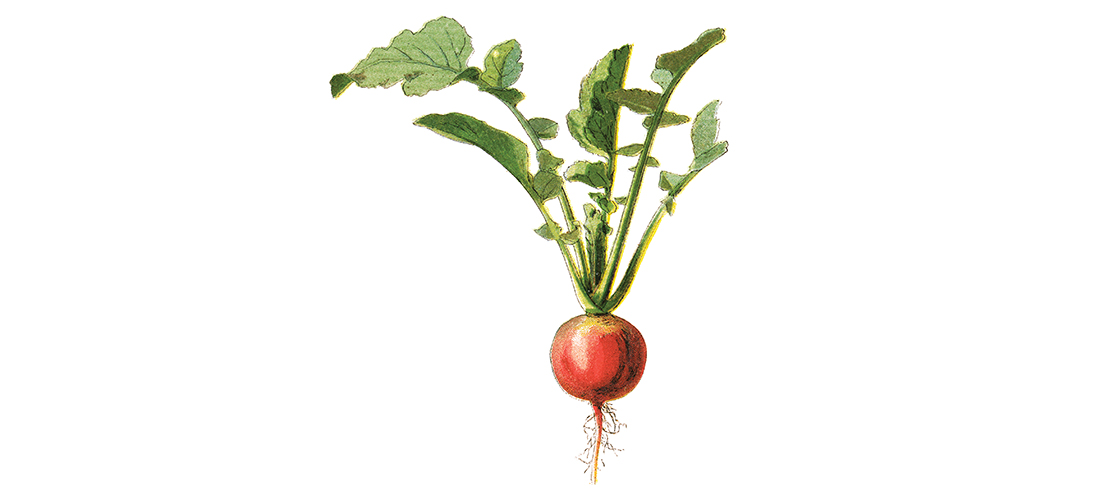
Fall Gardens
The reward for sticking out the summer
By Jan Leitschuh
It’s hot out. Maybe you’ve noticed.
Do you need a weed-eater to get through your tired summer garden? Is your current output a very few puny, battle-scarred, malformed green remnants drooping from your sprawling, blighted tomato plants? Are you doing the September fire ant dance?
Squash, cukes and melons are long over. Who in their right mind wants to think about rooting around in the dirt right now, battling bugs, heat, humidity hell-ants and salty, eye-pickling sweat?
Have I sold you on fall gardening yet?
You might consider it. That homegrown Thanksgiving cornucopia doesn’t appear by magic.
Fall gardens in the Sandhills are nature’s reward for sticking it out during the summer. Your mature eggplant and peppers breathe a sigh of relief, throwing out more blossoms and setting abundant fruits in the cooler evening temps. Okra offers a last generous gasp before succumbing to the dried decorations of autumn. Pumpkins and winter squash ripen. Some fall-sown crops — like spinach, garlic, kale, chard, arugula and collards — may grow well into winter, pause, and then spring back next year with vigor. While the fire ants do kick into gear, in September the remainder of the biting/stinging bugs declines rapidly. Mind your step.
Best of all, as the temps finally cool, we remember once again why we love to garden and grow fresh produce for our tables. We actually like being outside. And some lovely floral garden additions, such as poppies, calendula and larkspur, prefer a fall planting for garden glory next spring.
Garden prep is the first step. Pull out and destroy those pathetic tomato vines. Make a note of anywhere you planted tomatoes, potatoes, eggplant and peppers this year, because you will want to rotate those crops to different areas next year to avoid disease buildup.
Now is the time to pull your soil samples. You can get a free soil test kit and directions from Moore County Cooperative Extension. Add needed nutrients, often just lime and sulpomag, a magnesium/potassium/sulfur additive. It’s also the time to till in some rich compost. Any greens you plant will need a nitrogen boost, so work it in now. I like feather meal or blood meal early on, but as the weather cools, these nutrients aren’t as readily available because the breakdown slows.
Save your raked leaves, by the way. I ask my husband to bring home the bags of crape myrtle and maple leaves he acquires in his work. These small, thin leaves break down quickly. I often use them lightly for a little early garden mulch, or I spread them atop beds that will be fallow over the winter, to be tilled under by worms or our tiller in the spring.
Waxy, tougher leaves like oak and magnolia can work, but will need to be run over with the mower or otherwise shredded or broken down. I’ll also mulch the blueberries, blackberries, grapevines and fruit trees with fall leaves.
What can you plant in your fall garden? Believe it or not, if you hustle, you can still plant a mess of bush snap beans through, say, mid-September, and cross your fingers. Look for a variety that matures in 50-55 days. Likewise, carrots need to go in immediately. Beets, spinach and chard, often planted in August, could still go in during the first two weeks of September. If you enjoy dill, toss some in, as well as a few transplants of parsley for winter-long greenery and flavor. Fresh parsley in homemade chicken soup is scientifically proven to cure what ails you, right?
We all know about tougher stewing greens — collards, chard and kale — and while those are nice, even wildly nutritious, they don’t excite the imagination as much as, say, an experimental patch of sugar snap peas, or a bed of carrots that, if covered with straw before a hard frost, provide a long season of cold storage. (Just uncover and pull a fresh handful for that night’s stew or roast pork.) Some gardeners lay a board over their newly watered carrot seeds to encourage germination. Check daily and remove the board when the seeds sprout.
Spicy radishes are satisfying to sow, as they spring up almost immediately. They’re as near to instant gratification as a seed-packet garden gets. Plant a few each week in succession for a continuous addition to fall salads and veggie roasts — yes, you can roast them, and they sweeten up in the oven. Bulb onions can go in now, and add their savory healthfulness to most any meal.
If you want cabbages, broccoli, bok choy, parsley or cauliflower, you would do well to start with plants from a garden center or local farmer who grows them. Garlic cloves can be planted in the latter part of September for a May harvest for green garlic, a June harvest for full heads. You can seed many different types of lettuce. Black-seeded Simpson is a loose-leaf, cold-hardy old favorite. Cut-and-come-again loose-leaf lettuces are popular and colorful. Likewise, mustard greens, spicy Italian arugula, turnips, parsnips, spinach, rutabaga, kale and chard can be seeded right now.
Seeds that normally germinate in spring’s cold soils may need a little indoor help in fall’s early scorch and drought. You can wet sturdy paper towels, sprinkle your seeds on top and roll the towel up like a cigar. Fold it in half and tuck it into a paper cup, labeling the seed. Stick in your fridge for a couple of days, checking carefully after the second day to see if dormancy has broken. Keep the paper towel moist until it does.
If you don’t care to fill up your summer beds with fall produce, then by all means clean up the old plants and stakes, and till those leaves in. Or consider sowing a cover crop such as vigorous winter rye — the roots of rye burrow down deeply for good distances, automatically enriching your garden beds with organic matter. Mow them in spring and turn under for a green manure.
Finally, our favorite winter cover crop, the vibrant crimson clover, can be found at local farm stores. So striking in spring, crimson clover is often used in bouquets, vibrating its scarlet blossoms against spring green foliage. Besides adding nitrogen and green manure to the soils, the blossoms are beloved by bees and makes the best honey, in my opinion.
If you are done with 2020 gardening, no judgment. It’s been a weird, buggy year, and there is local produce about. But I’d be willing to take bets that when the January seed catalogs roll around in early 2021, we will have left the memory of heat and bugs long behind. PS
Jan Leitschuh is a local gardener, avid eater of fresh produce and co-founder of Sandhills Farm to Table.





